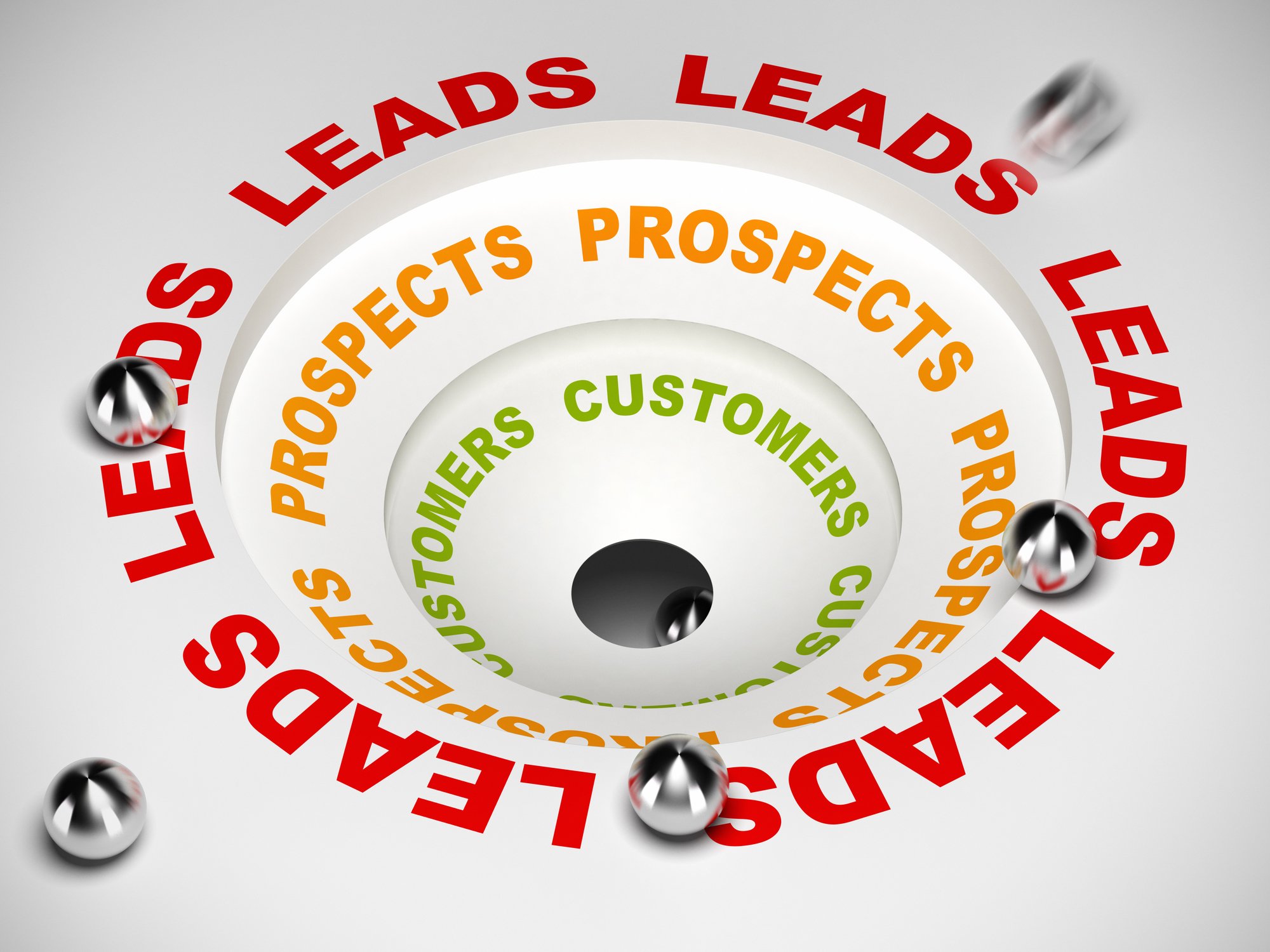
An Expert Guide to Qualifying Property Management Leads
Listen to the article
An Expert Guide to Qualifying Property Management Leads
Your inbound marketing program is generating fresh, new leads. Congrats!
Now, what do you do with them? It's time to qualify those leads to maximize your efforts in cultivating the best leads into your best new customers.
We've talked about how your inbound program will help generate more leads. We've also talked about how more leads lead to more doors and more profit. However, property management leads don't magically turn into new doors without a strategy to make that happen.
Here's an expert guide to help you get to know your leads and establish a lead qualification plan to help move you toward the next steps with your business.

What is a Lead?
A sales lead is a new property owner or potential customer who engages with your business through your marketing efforts. Today, we'll talk specifically about leads from inbound efforts.
If you haven't jumped on board with inbound, it's time. It is the best use of your marketing dollars to drive website traffic and generate more quality leads for your property management business.
When analyzing ROI (return on investment) for different marketing strategies, it makes good business sense to spend less for leads with better closing potential. However, when you get those leads, you need to help them perform to their potential — or lack thereof.
Not All Leads are Great Leads
Even with an excellent inbound marketing plan that delivers better quality leads than you've ever experienced before, not every lead is created equal. So, distinguishing between potential clients and "dud" leads is crucial for growing your business effectively.
This is where a well-thought-out lead qualification process becomes crucial. A lead qualification plan is indispensable for property managers in filtering potential property owner clients from leads that will never convert.
By setting clear criteria, managers can quickly identify which property owners align with their services and values.
A good lead might be an owner who seeks long-term collaboration, possesses properties in prime locations, or values timely communication and transparency. In contrast, owners with unclear expectations or properties in less desirable areas might require more effort for less return.
A systematic approach saves time, ensures service quality, and optimizes resource allocation.
Is Lead Qualifying the Same As Lead Scoring?
Lead scoring and lead qualifying are two vital processes for sales and marketing teams to help property management businesses prioritize and manage potential customers — but they are not the same.
Here's a breakdown of the two.
Lead Scoring
Lead scoring is a quantitative method that assigns numerical values to leads based on specific criteria or behaviors they exhibit. These criteria can include demographic information (like job title or company size) and behavioral data (like website visits or email opens).
By applying a lead score, property management companies can rank them in order of potential value or likelihood to convert, ensuring that the sales team focuses on the most promising prospects first.
Lead Qualifying
This is a more qualitative approach. It involves evaluating whether a lead is a good fit for what a business offers. This is our focus for today.
During the lead qualification process, sales or marketing professionals assess the lead's needs, budget, purchase authority, and timing to determine if they should pursue the opportunity further. Those that meet the criteria are considered "qualified" and are moved further down the sales funnel.
In essence, while lead scoring numerically prioritizes leads based on their attributes and behaviors, lead qualifying evaluates their fit and readiness for your product or service.

The Lead Qualification Process
Whether you have some semblance of a process in place or you're today years old when learning about the importance of qualifying leads, we hope the following insights can help you fine-tune or establish a process that helps you close more deals.
Think of qualifying leads as classifying new contacts from "best" potential to "lowest" potential.
-
High-potential leads deserve more of your time and energy.
-
Low-potential leads might not be worth more time and energy to cultivate into better prospects.
With "high" vs. "low" in mind, property managers should also use the following categories to determine the potential of each lead.
Organization-Level Leads
Organization-level leads aren't yet valuable because you don't know enough about them to move forward.
With the information you have, ask yourself a few questions about a potential Organization-Level lead:
-
What do they do?
-
Where are they located?
-
Do they fit your company's buyer persona?
If a lead isn't in your service area and doesn't fit your buyer persona, they are low-priority. Don't force a low-level lead to fit your business.
However, consider keeping them on low-priority inbound communications. You never know when a low-potential lead could upgrade themselves to a more significant opportunity lead.
Opportunity-Level Leads
Now we're talking! You know enough about Opportunity-level leads to ask more specific questions about who they are, what they need, and how your company can help.
Next, you need to determine a few things:
-
What's the budget? Does their budget match with any of your service plans or offers? If they can't afford you, the opportunity to gain their business decreases.
-
Does your lead have authority? Are you talking to the right person who can make purchase decisions? If not, develop a relationship with your lead that "leads" to a connection with the purchasing decision-maker.
-
What's the need? Can you solve their problem or help them grow their business? If you can't help, they aren't a good lead for you.
-
What's the timeline? Are they making a decision within the next six months? Are they doing research for plans a year or two down the road? Their timing affects how you move forward with a lead.
After you've gathered this type of information, you'll know if this lead is a good fit for your company.
Stakeholder-Level Leads
These inbound leads have the best closing potential! Stakeholder-level leads are your new potential customers in the making. It's time to move forward.
What is a Stakeholder? In terms of lead qualification, a stakeholder can influence the outcome of a decision. For a property management example, these decision-makers typically include landlords, property owners, or portfolio owners looking for property management services.
When you've determined that a lead is a good fit and is a Stakeholder (aka kind of a big deal), start talking specifics.
-
Discuss budgets, services, dates, and plans
-
Set goals and define how to measure those goals
-
Define decision-makers, schedules, and deliverables
When you've documented how you'll move forward with your new Stakeholder, make sure you protect your new client relationship. Serve them well, and hold them accountable for being a good client.
Your Process Must Also Disqualify Leads
At any point during the qualification process, you might find that a lead isn't what they seemed to be (and doesn't have the potential to become a fan of your business).
Disqualifying a lead can safeguard your business from potential pitfalls down the road. It's essential to be discerning and attentive, prioritizing the quality of leads over sheer quantity.
Be vigilant and watch for red flags.
If a lead provides inconsistent or contradictory information, it may indicate a lack of clarity or even dishonesty. Additionally, an inability to meet agreed-upon deadlines might suggest a lack of commitment or organizational skills. If they're continuously hard to reach, question their level of interest or reliability.
Remember, just as an empty property might be more beneficial than filling it with a problematic tenant, the same principle applies to potential customers. It's better to wait for a compatible client (or qualified leads that make sense to pursue) than to rush and work with someone unsuitable for your business structure, operations, and goals.
Don't be tempted to over-qualify a lead, especially if they display signs of being bad for your business.
Working with ill-fitting leads not only saps your time and energy but can also be a financially draining endeavor. It's better to invest efforts in cultivating relationships with leads that align with your business values and objectives, ensuring long-term success and mutual satisfaction.
Lead Qualification Requires Time and Patience (But It's Crucial)
It's tempting to run after every new name that comes in through your inbound property management marketing efforts. However, not every lead is worth your valuable time and energy.
As property managers, we understand it's not easy to qualify leads in a helpful and efficient way — especially when your need for new business looms heavily over your need to have patience for the right leads to come in.
However, Geekly Media can help you learn best practices when building a process for qualifying leads. Let's set up a time for a free consultation! Contact us to discuss your business needs and how we can help you maximize your time and energy when qualifying leads.


-1.png)
